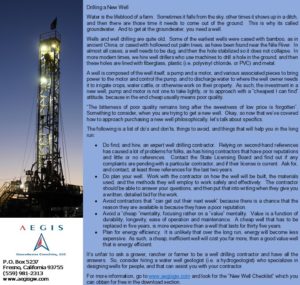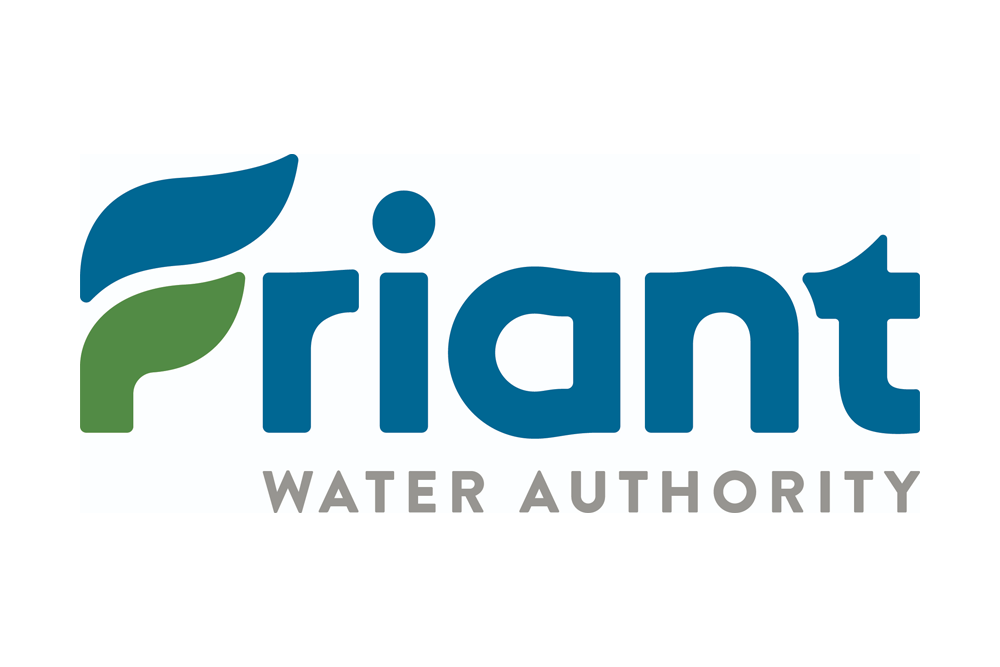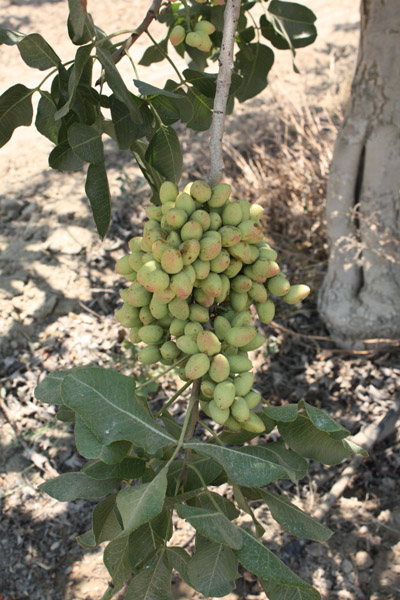 The Tulare Irrigation District held its board of directors meeting on Tuesday, April 9, 2019 at its headquarters west of Tulare. Chairman Dave Bixler called the meeting to order about 9:00 am and TID General Manager Aaron Fukuda welcomed everyone. The usual bookkeeping items were approved and it was good to be back here. This is the first time this year I’ve been able to attend TID and it is usually one of my regular meetings. It was windy at my palatial lean-to by the Friant Kern
The Tulare Irrigation District held its board of directors meeting on Tuesday, April 9, 2019 at its headquarters west of Tulare. Chairman Dave Bixler called the meeting to order about 9:00 am and TID General Manager Aaron Fukuda welcomed everyone. The usual bookkeeping items were approved and it was good to be back here. This is the first time this year I’ve been able to attend TID and it is usually one of my regular meetings. It was windy at my palatial lean-to by the Friant Kern  Canal and it’s supposed to get really windy by this evening.
Canal and it’s supposed to get really windy by this evening.
Water Master Marco Crenshaw gave his report and said there is a car in one of the canals. It was difficult to find and it there have been five vehicles found in TID canals so far this year. He said the average is one or two a year. Unrelated but I find it interesting to note there was an unexpected airplane found in the San Luis Delta Mendota Canal when it was dewatered a few years back. Crenshaw said the on farm recharge program run until the end of last week. TID gets surface water from the Kaweah River and the US Bureau of Reclamation’s Friant Division of the Central Valley Project. There’s not much rain in the immediate future but there have been some big, dark, wet storm clouds just hammering the Valley floor. TID’s supplies are in good shape and the district is doing its best to fully utilize as much as possible.
Fukuda showed photos of the Oroville Dam spillway. He said and I agree, amazing what the state can do when it’s motivated. It cost $1 billion to repair, it is functional and the source of yet another one of the California Department of Everything’s a Damn Problem’s Division of Trump Resistance squabbles. The state wants FEMA to pay $300 million and the feds are saying no, that money is for natural disasters not design flaws. We’ll see. Fukuda went on with reporting the Kaweah River coordination meetings need help. Westside Mutual, owned by Wonderful is developing a recapture/recirculation agreement and a transfer agreement that should work for this year’s needs. A grower in Delano Earlimart ID wants to trade out 1,200 a/f of CVP water and that’s being looked at.
Superintendent Wayne Fox reported he’s dealing with homeless camps along the canals. This is something that happens up and down the Valley and has been as long as I can remember. Fox reported there is a strong push to maintain the district’s safety record. The ongoing eradication of unwanted weeds both inside and out of the canals. Director Rick Borges  suggested using a crop duster for one of the larger ponding basins with a plethora of weeds. Director Mike Thomas suggested putting a tank on Crenshaw’s bass boat but that may not work out. Someone said Kaweah Delta purchased one of those all-terrain vehicles with eight wheels that is supposed to be amphibian. It was said they tried to use it for spraying and it couldn’t hold more than 50 gallons of juice and they had to add pontoons keep it from swamping. There was a big problem of tumble weeds collecting in the canal by Okieville. I told Fox I find the name of that community to be micro-aggressive towards my people. TID has a project called the Cortney Basin. It is running behind schedule but the funding source is from the San Joaquin River Restoration pot. I didn’t realize there was such a fund available to all Friant contractors. It may not be behind schedule as Fukuda explained he and former GM Paul Hendrix started this project but the drought hit and it didn’t make senses to expend the money in this manner when other projects could provide some immediate relief to the drought. TID has a good crew that can handle the construction but the that same crew has other duties. Borges said using the staff for construction is ok as long as the maintenance doesn’t fall behind. Fukuda said outside contractors will be used in the future. Fox said another consideration is to stockpile the dirt from excavation and let whoever is purchasing the dirt pick it up from the pile – that’d be faster. Director Dave Martin reminded Fox to tell the ditch tenders to slow down and prevent more dust. That lead to the topic of sand on TID canal banks. Thomas said he put sand all around one of his orchards and it had to be certified organic; since he grows organic crops. Martin said that was too bad because GMO sand is cheaper.
suggested using a crop duster for one of the larger ponding basins with a plethora of weeds. Director Mike Thomas suggested putting a tank on Crenshaw’s bass boat but that may not work out. Someone said Kaweah Delta purchased one of those all-terrain vehicles with eight wheels that is supposed to be amphibian. It was said they tried to use it for spraying and it couldn’t hold more than 50 gallons of juice and they had to add pontoons keep it from swamping. There was a big problem of tumble weeds collecting in the canal by Okieville. I told Fox I find the name of that community to be micro-aggressive towards my people. TID has a project called the Cortney Basin. It is running behind schedule but the funding source is from the San Joaquin River Restoration pot. I didn’t realize there was such a fund available to all Friant contractors. It may not be behind schedule as Fukuda explained he and former GM Paul Hendrix started this project but the drought hit and it didn’t make senses to expend the money in this manner when other projects could provide some immediate relief to the drought. TID has a good crew that can handle the construction but the that same crew has other duties. Borges said using the staff for construction is ok as long as the maintenance doesn’t fall behind. Fukuda said outside contractors will be used in the future. Fox said another consideration is to stockpile the dirt from excavation and let whoever is purchasing the dirt pick it up from the pile – that’d be faster. Director Dave Martin reminded Fox to tell the ditch tenders to slow down and prevent more dust. That lead to the topic of sand on TID canal banks. Thomas said he put sand all around one of his orchards and it had to be certified organic; since he grows organic crops. Martin said that was too bad because GMO sand is cheaper.
Controller Kathi Artis gave the financial report including the actual financial statements and payment of bills.  Everything was in order and the board approved the whole shebang. Artis said the Mid Kaweah GSA is doing good on its payments and financial behavior in general. Hendrix is in charge of the MKGSA. He retired from TID and jumped into that fire but he appears to be thriving.
Everything was in order and the board approved the whole shebang. Artis said the Mid Kaweah GSA is doing good on its payments and financial behavior in general. Hendrix is in charge of the MKGSA. He retired from TID and jumped into that fire but he appears to be thriving.
Jeremy Barroll gave the engineering report saying a ditch was realigned to accommodate the development of the Cordeniz Basin. There is framing on concrete forms and excavation. The on farm recharge took 2,256 a/f. The board gave Barroll some praise for his “get it done” attitude.
Fukuda gave the Mid Kaweah GSA report saying the final draft of the basin setting is complete. This version decreased both Kaweah River and mountain front supplies. Some methodology changes and redefining the periods used for calibration. The period of 1997-2017 will be used as the timeframe for the current period and for projections out to 2070. Fukuda said this 20-year period was spot on as an average even accounting for the drought. He said the amount of groundwater flowing into the GSA and amount doesn’t add up due to underground flows into and out of the sub basin. The historical overdraft was  calculated to be 65,600 a/f average and the current overdraft at 77,591 a/f annual. Phreatophytes were included in the calculation.
calculated to be 65,600 a/f average and the current overdraft at 77,591 a/f annual. Phreatophytes were included in the calculation.
Martin asked about land retirement and how that was dealt with in the Friant Valley Blueprint. The answer is land retirement is the last option. The Mid Kaweah GSA falls in the Kaweah Sub Basin so it is in a pretty good spot to be. It gets both Kaweah River and CVP surface supplies but not all GSAs are created equal. This is why each GSA gets to write its own GSP and whether or not to fallow or retire is up to them. Martin said the price of ag real estate in TID is going through the roof because of its almost neutral water balance. Fukuda said he sees land retirement as more a case of cities running out of water and can’t develop any further. So the city makes a good offer to a farmer to retire his land and the city gets the water. The cities are going to be limited by how much development they can have by water. There is speculation developers are currently trying to get as much on the books as it can. Borges asked if there are any agreements with the surrounding GSAs and Fukuda said there isn’t any coordination taking place before the GSPs are further developed. Fukuda said he was surprised the overdraft figure of 77,591 a/f was so low. That could leave room for who knows how many Starbucks with a quarter mile line to get through the drive up window. 
How the water in the Kaweah Sub Basin is split up is being envisioned as three legal buckets depending on source; native, foreign and salvaged. Chapter 2, 4 and 7 are drafted and under review. The advisory committee is reviewing and will get back. The advisory committee lost one member is and is now at 10. Fukuda said it might be best to let it lie as opposed to putting someone new on the committee. However, our friend Geoff Vandenheuvel’s name was mentioned as a replacement. Vandenheuvel is a retired dairyman from Chino and has attends as many meetings as anyone and is up to speed. I’d vote for him.
Fukuda reported on Friant matters saying the drawdown on the Friant Kern Canal will be delayed to 2020 to take as full  advantage as possible. But the big deal is Operations Maintenance & Repair cost recovery. There is a need to address the issue of extraordinary maintenance. Fukuda is concerned extraordinary maintenance could become the default subsidence fix fund. The Bureau would simply recover costs based on O&M shares and Friant Water Authority would like to codify this in the OM&R cost recovery methodology. Fukuda said the problem with the current methodology is the contractors south of the “kink” in the FKC would benefit the most and pay the least. There is a $5 million cost share for subsidence fix for now. That’s a little less confusing than what was torn from the last Friant meeting.
advantage as possible. But the big deal is Operations Maintenance & Repair cost recovery. There is a need to address the issue of extraordinary maintenance. Fukuda is concerned extraordinary maintenance could become the default subsidence fix fund. The Bureau would simply recover costs based on O&M shares and Friant Water Authority would like to codify this in the OM&R cost recovery methodology. Fukuda said the problem with the current methodology is the contractors south of the “kink” in the FKC would benefit the most and pay the least. There is a $5 million cost share for subsidence fix for now. That’s a little less confusing than what was torn from the last Friant meeting.
There is a grand bargain in the works which is a combination of additions to help reduce the call for water by th e Exchange Contractors. It’s going to $6 pre a/f and bring about improvement of certainty of recapturing 60,000 a/f of SJ River recapture. Title transfer of the FKC from the USBR to the FWA. It’s a big deal also. The SJV Blueprint has 38 members on its steering committee is starting to roll. The subsidence fix by Stantec has been narrowed to pretty much two choices; historic or maximum capacity. Since the Tule Sub Basin is ground zero for this problem how the pumping drawdown allowed under the Eastern Tule GSA’s GSP. The cost differences between the two options are closing in on each other. Option one is getting cheaper while option two is growing more expensive. Austin Ewell and Johnny Amaral are now working for Friant. There will be a dinner in Bakersfield tomorrow night.
e Exchange Contractors. It’s going to $6 pre a/f and bring about improvement of certainty of recapturing 60,000 a/f of SJ River recapture. Title transfer of the FKC from the USBR to the FWA. It’s a big deal also. The SJV Blueprint has 38 members on its steering committee is starting to roll. The subsidence fix by Stantec has been narrowed to pretty much two choices; historic or maximum capacity. Since the Tule Sub Basin is ground zero for this problem how the pumping drawdown allowed under the Eastern Tule GSA’s GSP. The cost differences between the two options are closing in on each other. Option one is getting cheaper while option two is growing more expensive. Austin Ewell and Johnny Amaral are now working for Friant. There will be a dinner in Bakersfield tomorrow night.
Under legislation Fukuda talked about funding for the NASA snow flights, $400m for fixing the FKC and a bill to study the social and economic impacts of SGMA. The McKay Point Basin is a Kaweah Delta WCD project with extra dirt now that High  Speed Rail is stalled. TID has some land upstream from the project and could take the dirt. KD wants to pay TID $5,000 to dump 2.5 million cubic yards of material on this land. It’s now grazing land and with SGMA here it may stay that way. One twist is both TID and KDWCD are ACWA JPIA members and what’s that policy going to look like? Anyway, the board approved.
Speed Rail is stalled. TID has some land upstream from the project and could take the dirt. KD wants to pay TID $5,000 to dump 2.5 million cubic yards of material on this land. It’s now grazing land and with SGMA here it may stay that way. One twist is both TID and KDWCD are ACWA JPIA members and what’s that policy going to look like? Anyway, the board approved.
Fukuda asked the board to send a letter of support for SB 559, the bill with $400 million for the FKC. At the Valley Ag Water Coalition there are factions on the State Water Project who believes state money shouldn’t be sent to federal projects. Never has there been a bill like this and Fukuda said this is why ag water has such a hard time. It’s me, me, me and what’s in it for me attitude. It’s like the editorial board of the San Jose Mercury News. The board voted to send a letter of approval for SB 559. Next Fukuda talked about he Cultivate California program being administered by the California Farm Water Coalition. The board agreed to donate.
The meeting went into closed session and the next meeting is May 14th.
DISCLAIMER OF RESPONSIBILITY; Waterwrights strives to provide his clients with the most complete, up-to-date, and  accurate information available. Nevertheless, Waterwrights does not serve as a guarantor of the accuracy or completeness of the information provided, and specifically disclaims any and all responsibility for information that is not accurate, up-to-date, or complete. Waterwrights’ clients therefore rely on the accuracy, completeness and timeliness of information from Waterwrights entirely at their own risk. The opinions expressed in this report are those of the author and do not represent any advertisers or third parties.
accurate information available. Nevertheless, Waterwrights does not serve as a guarantor of the accuracy or completeness of the information provided, and specifically disclaims any and all responsibility for information that is not accurate, up-to-date, or complete. Waterwrights’ clients therefore rely on the accuracy, completeness and timeliness of information from Waterwrights entirely at their own risk. The opinions expressed in this report are those of the author and do not represent any advertisers or third parties.
ALL RIGHTS RESERVED. Copyright 2019 by Don A. Wright
TULARE IRRIGATION DISTRICT
6826 Ave 240, Tulare, CA 93274 Office: 559/686-3425
Board: David G. Bixler- President, Richard S. Borges, Jr.-Vice President, Scott Rogers, Dave Martin & Michael Thomas
Staff: Aaron Fukuda-General Manager, Bill Sario-Engineer, Kathi Artis–District Controller, Wayne Fox–Superintendent, Marco Crenshaw–District Watermaster & Alex Peltzer-Attorney, Engineering Intern-Jeremy Barroll.
About: The Tulare Irrigation District was organized September 21, 1889. The original proposal for the formation of an irrigation district covering 219,000 acres, extending from the Sierra Nevada foothills to Tulare Lake, was eventually reduced to 32,500 acres. The District continued in this status until January of 1948 when the so-called Kaweah Lands” (approximately 11,000 acres) were annexed. In October of 1948, approximately 31,000 acres, compromising the area served by the Packwood Canal Company were annexed to the District. A U.S. Bureau of Reclamation contract was signed in 1950 providing an annual supply of 30,000 acre-feet of Class 1 water, and up to 141,000 acre-feet of Class 2 water from the Friant-Kern Canal. The District and the Kaweah Delta Water Conservation District have coordinated efforts to enhance the recharge of groundwater within the Kaweah Basin. During high flow times KDWCD may use the recharge basins with the District for recharge purposes. Further, KDWCD has historically provided for a financial incentive program through which the District sustains the level of groundwater recharge from supply sources into the District. This historical program was recently reinstated by both districts in lieu of the District’s plans to concrete-line this canal to conserve the surface water. TID is a member of the Mid Kaweah GSA.


































